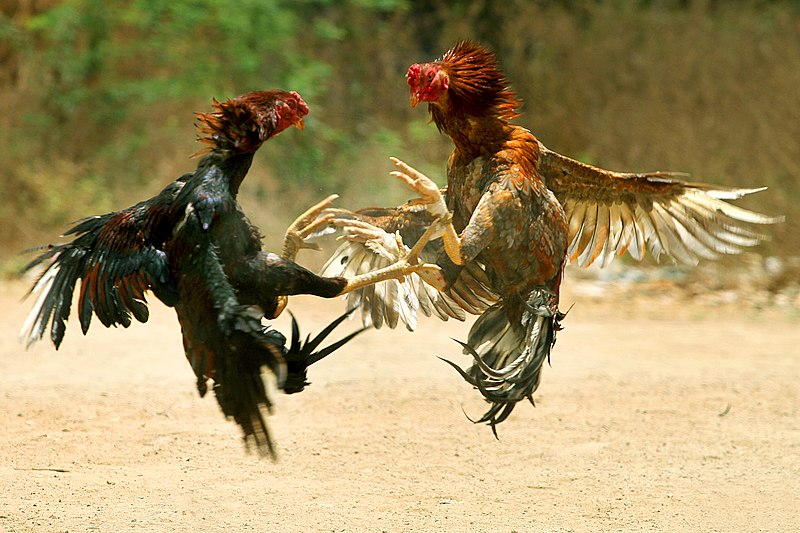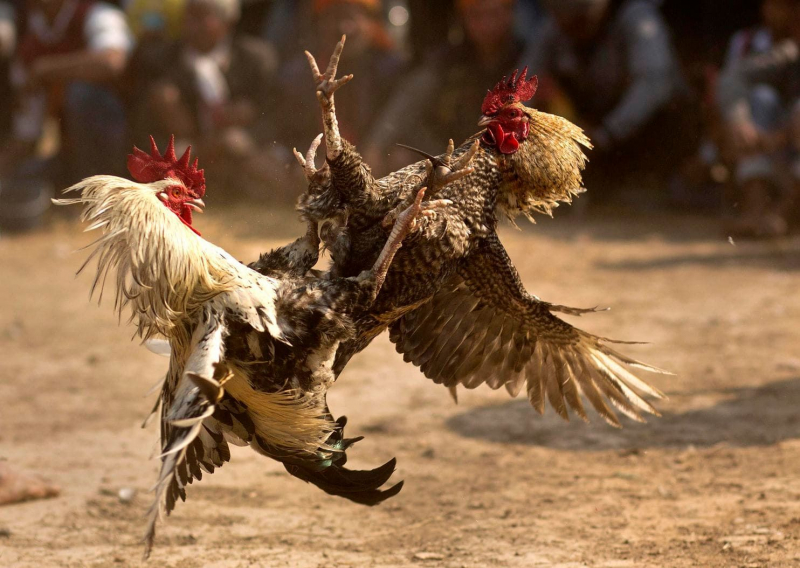Cockfighting
By 2000 BCE, cockfighting was a pastime and one of the uses for fighting cock in the Indus Valley Civilization in what is now Pakistan. According to the Encyclopaedia Britannica (2008), the game bird is probably the one that is most similar to the Indian red jungle fowl (Gallus gallus), which is thought to be the ancestor of all domestic chickens. In ancient times, the Indian subcontinent, China, the Persian Empire, and other Eastern nations were big fans of the sport, which Themistocles brought to Greece (c. 524–460 BCE). Throughout Sicily and Asia Minor, the sport became popular. The agricultural writer Columella (first century CE) noted that its devotees frequently wasted their entire fortune in betting on the side of the pit after the Romans pretended to hate this "Greek pleasure" for a long period.
The combatants, known as gamecocks (not to be confused with game birds), are raised and trained specifically to have greater endurance and power. Game fowl refers to both male and female chickens of this breed. All males of the same species are aggressive against cocks by congenital nature. On the result of the game, bets are frequently placed.
Due in part to the physical harm that the cocks cause to one another, which is occasionally made worse by fastening metal spurs to the cocks' natural spurs, cockfighting is a blood sport. Even though not all fights end in death, the cocks may sustain severe bodily harm. In some parts of the world, cockfighting is still a common event; in other nations, it is either outright illegal or subject to legal restrictions. Many times, proponents of the "age-old sport" cite the cultural and religious significance of cockfighting as justifications for its continued existence.













